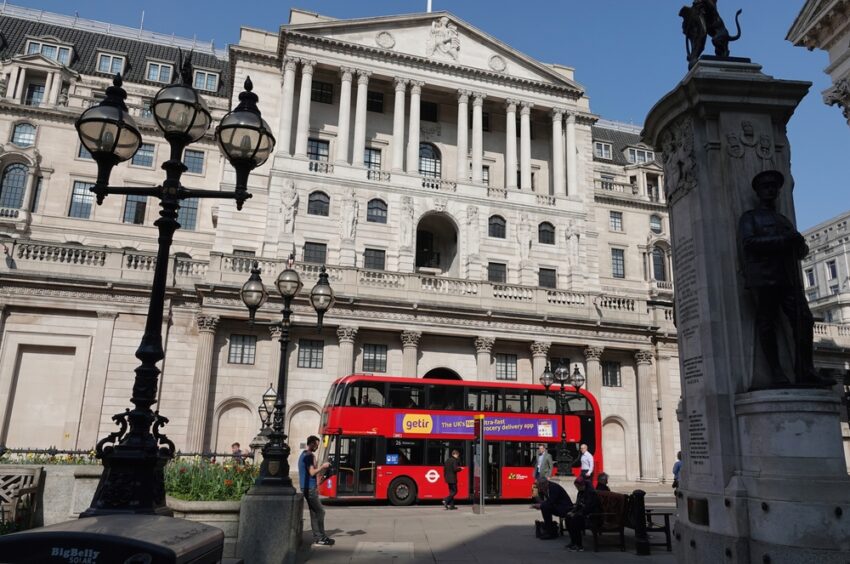Strategic Use of Strike Prices in Risk Management
Understanding the importance of strike price is like holding a compass in the world of options trading. Read more: Strategic Use of Strike Prices in Risk Management


Understanding the importance of strike price is like holding a compass in the world of options trading.
This crucial element helps traders navigate market uncertainties and manage risk effectively. By selecting the right strike price, investors can safeguard their portfolios while maximizing potential returns, much like a seasoned sailor charting a safe course through turbulent waters. In addition, you can find an investment education company to start your learning journey by clicking Go https://bitcoin-360-ai.com/
Mitigating Risk Through Strike Price Selection
Choosing the right strike price is like picking the perfect pair of shoes for a hike—it needs to fit well and be suitable for the terrain. In options trading, the strike price is the predetermined price at which the underlying asset can be bought or sold. A well-chosen strike price can significantly mitigate risk by aligning with the trader’s market outlook and risk tolerance.
Consider a trader who anticipates moderate market growth. Selecting a strike price just above the current market price can balance potential gains with manageable risk. This strategy is akin to setting a safety net that catches potential falls without stifling the ability to climb higher. Conversely, a conservative trader might choose a strike price further out-of-the-money, sacrificing some profit potential for greater security against market downturns.
Strike price selection also involves considering market volatility. In highly volatile markets, choosing a strike price closer to the market price can protect against drastic swings, much like choosing a sturdy, reliable shoe for unpredictable hiking trails. Conversely, in stable markets, a strike price further from the market price can offer higher returns with lower perceived risk.
Moreover, strike prices play a crucial role in structured products and hedging strategies. By selecting the right strike price, traders can create a buffer against adverse market movements, ensuring their investment portfolio remains robust. Imagine it as having a versatile wardrobe—ready for any weather, ensuring comfort and protection regardless of conditions.
Strategies for Different Market Conditions
Navigating various market conditions with strike prices is like adjusting your sails based on the wind’s direction. Each market scenario—bullish, bearish, or sideways—requires a tailored approach to strike price selection to optimize returns and manage risk effectively.
In a bullish market, where prices are on the rise, selecting higher strike prices can capitalize on the upward trend. Think of it as setting your sails to catch the wind and propel you forward. Traders might choose strike prices slightly above the current market price to benefit from potential gains while maintaining a cushion against minor corrections. This approach allows for significant profit potential without excessive risk.
Conversely, in a bearish market, where prices are declining, lower strike prices become more favorable. This strategy acts like a protective anchor, minimizing losses as the market dips. Selecting strike prices below the current market price helps secure positions and provides a safety net, much like anchoring your boat in a storm to prevent drifting away.
Sideways markets, characterized by minimal price movement, call for a more nuanced approach. Here, traders might opt for strike prices close to the market value, aiming to profit from small, predictable fluctuations. This strategy is akin to tacking back and forth in a gentle breeze, making small adjustments to maintain momentum without veering off course.
In addition to these scenarios, traders must also consider market volatility. High volatility environments require strike prices that offer protection against sudden swings, similar to using a stabilizing keel on a boat in choppy waters. Low volatility, on the other hand, allows for more aggressive strike price selection, targeting higher returns with reduced risk.
Case Studies: Successful Risk Management Using Strike Prices
Real-world examples provide invaluable insights into the effective use of strike prices for risk management. Consider the 2008 financial crisis—a period of extreme market volatility. A seasoned trader, anticipating significant market downturns, strategically selected out-of-the-money strike prices. This choice acted as a financial life jacket, cushioning their portfolio against severe losses while others faced devastating impacts. This foresight and strategic selection of strike prices were crucial in navigating the financial storm and emerging relatively unscathed.
Another illustrative case involves a tech investor during the 2020 pandemic. With markets in turmoil and tech stocks showing resilience, the investor chose strike prices close to the market value. This strategy allowed them to leverage the tech sector’s growth while maintaining a protective barrier against unexpected dips. The result was a balanced portfolio that capitalized on sector strength without exposing the investor to undue risk.
A further example can be seen in the energy sector, where volatility is a constant. An energy trader, recognizing the cyclical nature of the market, employed a mix of in-the-money and out-of-the-money strike prices. This diversified approach ensured that gains could be locked in during upswings, while potential losses were minimized during downturns. Much like a well-balanced diet, this strategy provided the right mix of nutrients to keep the investment healthy and robust.
Conclusion
Strike prices are pivotal in risk management strategies, providing a balance between protection and profit potential. They act as a financial safety net, helping traders navigate volatile markets with confidence. Embracing smart strike price selection can turn market uncertainties into opportunities, ensuring that investments remain secure while poised for growth.
Read more:
Strategic Use of Strike Prices in Risk Management
What's Your Reaction?




















































